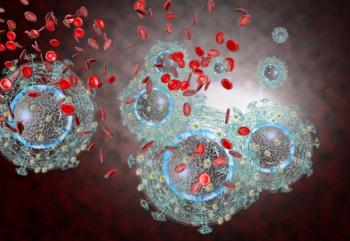
Injury Surveillance in the NFL: an Update from Quintiles Outcome
As the NFL kicks off its new season on September 5, Applied Clinical Trials checked in with
At that time, the pilot phase of the project included five teams—the New York Giants, New York Jets, Baltimore Ravens, Pittsburgh Steelers and the San Francisco 49ers. The pilot was completed during the course of the 2011 NFL season and rolled out to all the teams for the 2012.
The ISS has been in existence since 1980. As part of the collaboration, the proprietary Outcome System became the platform for the next generation ISS. In addition to providing technology and hosting services for the ISS, Quintiles Outcome also provides the NFL and its four standing medically focused committees, and ad-hoc committees that may be formed time to time, with epidemiological and biostatistical expertise to help analyze NFL injury data and support related medical research. The standing committees include: the Injury and Safety Panel; Head Neck and Spine; Foot and Ankle; and Cardiovascular.
According to Gliklich, the Injury and Safety Panel primarily reviews requests for use of ISS data for research by individual team physicians or other researchers. “Studies encompass foot and ankle research questions, evaluations of playing surfaces, mechanisms of injury, such as high ankle sprains; and so forth. There are several longitudinal studies currently under development with academic, private and federal partners on head injuries, cardiovascular mortality, and other research questions that require more in-depth and long-term data collection.” And, according to Gliklich, full longitudinal data tracking players long enough to really understand head injuries, for example, will take many years.
Gliklich walked through the process of using the ISS: When an injury occurs, the team’s Athletic Trainer opens a form in the Injury Surveillance System to capture a medical diagnosis for the injury and details about the activities in which the player and team were participating. While the player is recovering from the injury, the Athletic Trainer updates the form with any applicable treatments or procedures the player receives. Once the player is cleared to participate in team activities again, the Athletic Trainer will complete any required information and close the form.
While these forms are not in an integrated Electronic Health Record (EHR), Gliklich says the NFL plans to have a league-wide EMR system by 2014, with plans to fully integrate the ISS.
The teams tie into the ISS system via the cloud and access is through secure accounts. According to Gliklich, “Some teams that maintain local systems have the ability to electronically transfer data from their system into the central ISS.”
To date, the ISS has proven helpful for the NFL players. The NFL has recorded injury data for more than 30 years and has continually used the information to help guide rules changes and guidelines over that period of time to continuously improve the safety of the game. “The current system,” says Gliklich, “provides more information sooner as well as enhanced capabilities to analyze the data. An example of recent use of the data was in evaluating the impact of last season’s change in the kickoff rules, which in fact showed a trend toward decreased numbers of returns and injuries compared to previous years.”
The kickoff rule change made in 2011 moving kickoffs up five yards to the 35-yard line, accounted for a 43% decline in the number of concussions reported on kickoffs across the league in 2011, according to a
Outcome Sciences was purchased by Quintiles, which was announced days after the NFL announcement.
Newsletter
Stay current in clinical research with Applied Clinical Trials, providing expert insights, regulatory updates, and practical strategies for successful clinical trial design and execution.





.png)



.png)



.png)
.png)
